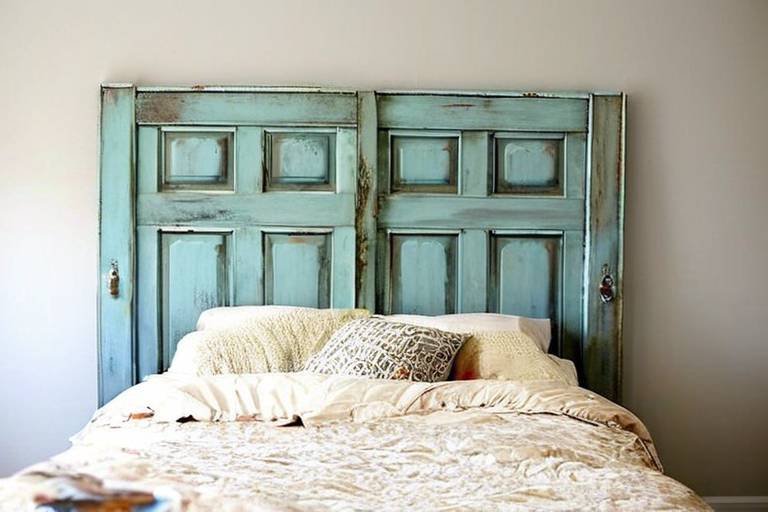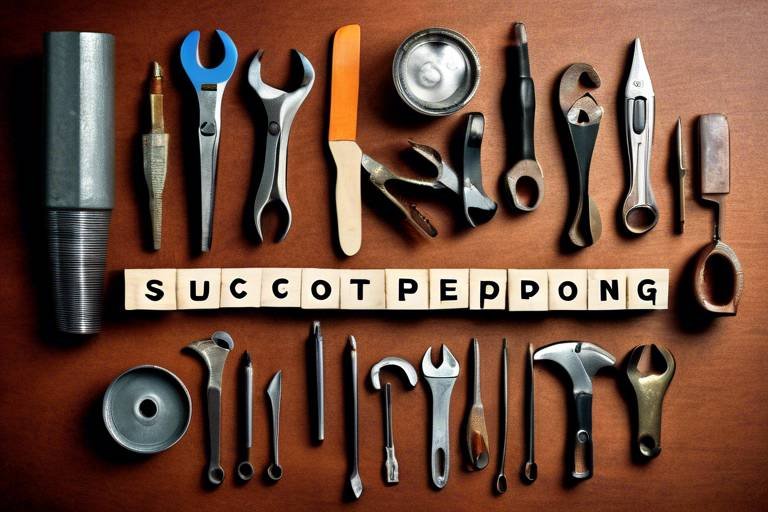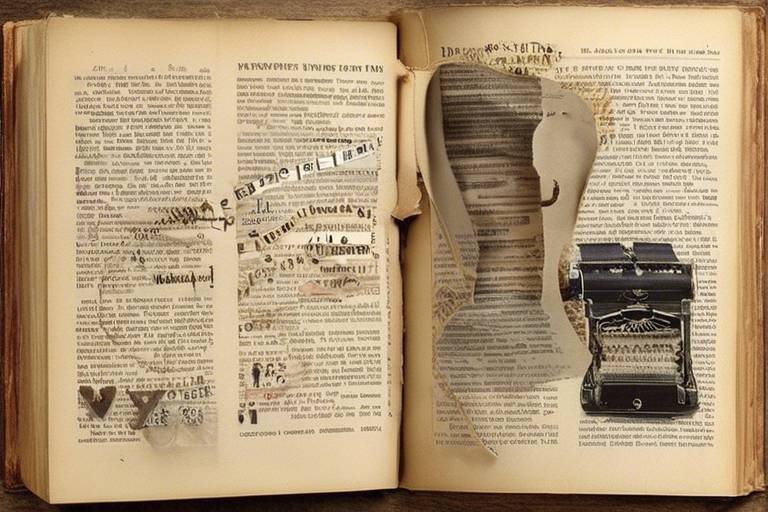Reduce Waste by Upcycling: Tips and Tricks
Have you ever looked at an old item and thought, "What a waste!"? Well, upcycling is the art of turning that waste into something beautiful and functional. It’s like giving your forgotten treasures a second chance at life! In a world where waste is piling up faster than we can manage, upcycling offers an innovative solution to minimize our environmental footprint while unleashing our creativity. Whether it's an old pair of jeans or a wooden pallet, the possibilities are endless. In this article, we’ll dive into practical tips and creative ideas to help you transform unwanted items into useful products, promoting a culture of sustainability and resourcefulness in your everyday life.
So, what exactly is upcycling? At its core, upcycling is about taking items that are no longer useful in their current form and creatively transforming them into something new. Unlike recycling, which often breaks down materials to create new products, upcycling maintains the integrity of the original item, allowing it to shine in a new light. This process not only reduces waste but also sparks a wave of creativity, giving you the chance to express yourself while being eco-friendly. Think of it as turning trash into treasure, where your imagination is the only limit!
Now that we’ve grasped the concept, let’s explore the numerous advantages of upcycling. First and foremost, it can save you money! Instead of buying new furniture or decor, you can breathe new life into what you already own. Plus, it’s an environmentally friendly practice—by upcycling, you’re reducing the demand for new products, which in turn decreases resource extraction and manufacturing pollution. And let's not forget about personal creativity; upcycling allows you to showcase your unique style and skills, turning mundane items into conversation starters.
When we talk about the environmental impact of upcycling, it's essential to understand how it contributes to reducing landfill waste. Every year, millions of tons of waste end up in landfills, where they can take decades or even centuries to decompose. By choosing to upcycle, you’re actively participating in a solution that helps combat this issue. Small actions, like transforming a glass jar into a stylish planter, can collectively lead to significant changes in our waste management practices.
One of the most significant benefits of upcycling is its potential to lower your carbon footprint. Each time you choose to upcycle instead of purchasing new items, you reduce the need for manufacturing and transportation of new products, which are major contributors to greenhouse gas emissions. It’s like giving Mother Earth a little hug! So, the next time you’re about to toss something in the trash, pause and think about how you can upcycle it instead.
Upcycling also plays a crucial role in conserving our planet's natural resources. Every time you reuse materials, you help reduce the demand for new raw materials, which often involve energy-intensive processes. For instance, upcycling an old wooden chair not only saves the wood from being discarded but also means less energy is spent on harvesting, processing, and transporting new wood. It’s a win-win situation for both you and the environment!
If you’re feeling inspired, let’s dive into some creative upcycling projects that anyone can try. Here are a few ideas to get those creative juices flowing:
- Old T-Shirts: Transform them into reusable shopping bags or trendy headbands.
- Glass Jars: Use them as candle holders, storage containers, or even decorative vases.
- Pallet Wood: Create rustic furniture like coffee tables or garden planters.
- Wine Corks: Craft coasters or bulletin boards from these little gems.
Ready to embark on your upcycling journey? First, you’ll want to gather your materials and choose projects that excite you. Start by looking around your home for items that you no longer use or need. It could be anything from furniture to clothing. The key is to select projects that match your skills and available materials, ensuring that they are both enjoyable and achievable. Don’t hesitate to challenge yourself, but also remember to keep it fun!
When it comes to choosing the right projects, consider your current skill level and the materials you have on hand. For beginners, simple projects like creating planters from tin cans or making decorative art from cardboard can be a great start. As you gain confidence, you can tackle more complex projects that may require some woodworking or sewing skills. The most important aspect is to enjoy the process and let your creativity flow!
Finding materials for your upcycling projects can be an adventure in itself! Check your home first—items that you might think of as trash can often be repurposed into something fabulous. Thrift stores, garage sales, and community exchanges are also fantastic places to hunt for potential upcycling treasures. You’d be surprised at what you can find when you keep your eyes peeled for possibilities!
Once you’ve created your masterpieces, don’t keep them to yourself! Sharing your upcycled projects with others can be incredibly rewarding. You can showcase your work on social media platforms, participate in local craft fairs, or even host a workshop to inspire others to join the upcycling movement. By sharing, you not only celebrate your creativity but also foster a community of upcyclers who can support and inspire each other.
1. What is the difference between recycling and upcycling?
Recycling involves breaking down materials to create new products, while upcycling creatively repurposes items without altering their original form.
2. Can upcycling save me money?
Absolutely! Upcycling allows you to transform items you already own into something new, reducing the need to buy new products.
3. Where can I find materials for upcycling?
You can find materials at home, thrift stores, garage sales, or community exchanges. Keep an eye out for items that can be repurposed!
4. Is upcycling difficult?
Not at all! Upcycling can be as simple or complex as you make it. Start with easy projects and gradually challenge yourself as you gain confidence.
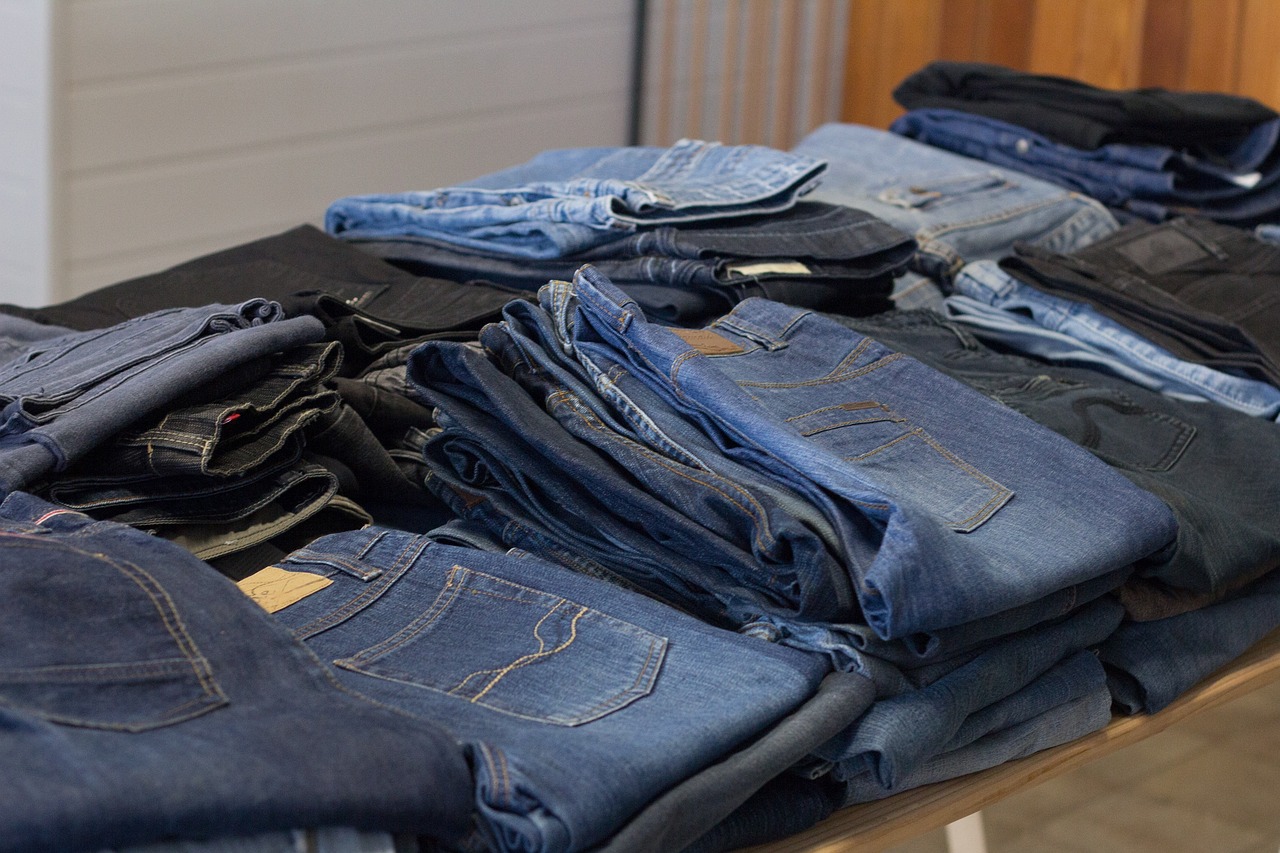
Understanding Upcycling
Upcycling is more than just a trendy buzzword; it’s a creative movement that encourages us to see value in items that would otherwise be discarded. Imagine looking at an old wooden pallet and envisioning it transformed into a beautiful garden bench. That’s the essence of upcycling! It’s about taking what might seem like junk and turning it into something functional or artistic. Unlike recycling, which often breaks materials down to create something new, upcycling gives a second life to items in their existing form, enhancing their value without the need for extensive processing.
The importance of upcycling in today's world cannot be overstated. With the increasing amount of waste we produce, finding innovative ways to reduce this burden is essential. Upcycling not only helps in minimizing landfill waste but also encourages a mindset of creativity and resourcefulness. By reimagining how we use everyday objects, we can transform our approach to consumption and waste management. It’s like turning back the clock on our throwaway culture, reminding us of the beauty and utility that can be found in what we already have.
Furthermore, upcycling has significant environmental benefits. Every time you choose to upcycle instead of purchasing new items, you're reducing the demand for new raw materials, which in turn decreases the energy consumption and pollution associated with manufacturing processes. Think of it this way: every upcycled item is a small victory against environmental degradation. By simply choosing to give an old item a new purpose, you are contributing to a larger movement towards sustainability.
To better understand upcycling, let’s look at some key differences between upcycling and recycling:
| Aspect | Upcycling | Recycling |
|---|---|---|
| Process | Transforming old items into new products without breaking them down. | Breaking down materials to create new products. |
| Value Addition | Increases the value of the original item. | Value may decrease as materials are processed. |
| Energy Consumption | Generally requires less energy than recycling. | Often involves significant energy use in processing. |
| Creativity | Encourages artistic expression and innovation. | Focuses on efficiency and material recovery. |
In conclusion, understanding upcycling is about recognizing the potential that lies within the items we often overlook. By embracing this practice, we can not only reduce waste but also foster a creative spirit that celebrates sustainability. So, the next time you consider tossing something out, take a moment to think about how you might upcycle it instead. You might just surprise yourself with what you can create!
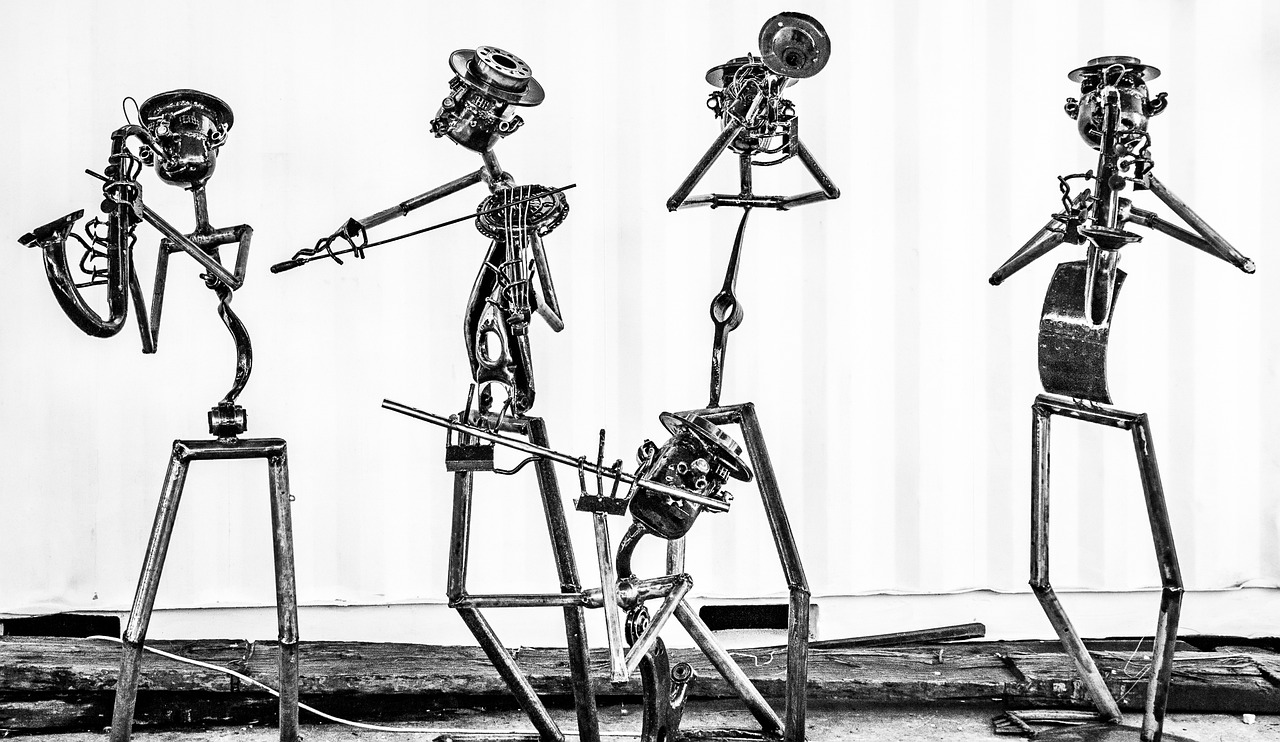
Benefits of Upcycling
Upcycling is more than just a trendy term; it's a transformative approach to waste management that brings a multitude of benefits to individuals, communities, and the planet. One of the most compelling aspects of upcycling is its ability to spark personal creativity. When you take an old item and give it a new purpose, you’re not just saving it from the landfill; you’re also engaging your imagination and crafting something uniquely yours. This process can be incredibly fulfilling, allowing you to express your style and personality in ways that store-bought items simply cannot.
But the perks of upcycling don’t stop there. It also offers significant cost savings. Instead of purchasing new products, which often come with hefty price tags, upcycling encourages you to utilize what you already have. This can lead to substantial savings in your budget, especially if you enjoy DIY projects. Imagine turning an old dresser into a chic bookshelf or transforming glass jars into beautiful candle holders—these projects not only breathe new life into forgotten items but also keep your wallet happy.
Moreover, upcycling plays a crucial role in reducing our environmental impact. Each time you choose to upcycle instead of throw away, you are actively contributing to a decrease in landfill waste. In fact, the environmental benefits of upcycling can be profound:
- Reduces Landfill Waste: Upcycling diverts materials from landfills, which are overflowing with discarded items that could have been repurposed.
- Conserves Resources: By reusing materials, upcycling minimizes the need for new resources, which can lead to less deforestation and reduced energy consumption.
- Encourages Sustainable Practices: It promotes a culture of sustainability, encouraging others to think twice before tossing out items that could be transformed.
Another significant benefit of upcycling is its ability to foster a sense of community. When you share your upcycled creations, whether through social media, local workshops, or community fairs, you inspire others to join in the movement. This collective effort not only enhances community bonds but also spreads awareness about the importance of sustainability. Imagine the ripple effect: one person's upcycled creation could inspire ten others to think creatively about waste, leading to a community-wide shift towards more sustainable practices.
In summary, the benefits of upcycling are extensive and multifaceted. From unleashing your creativity and saving money to making a positive impact on the environment and building community, upcycling is a practice that can enrich your life in countless ways. So, why not dive into this rewarding journey? The next time you find yourself about to toss something out, take a moment to consider how you might breathe new life into it instead!
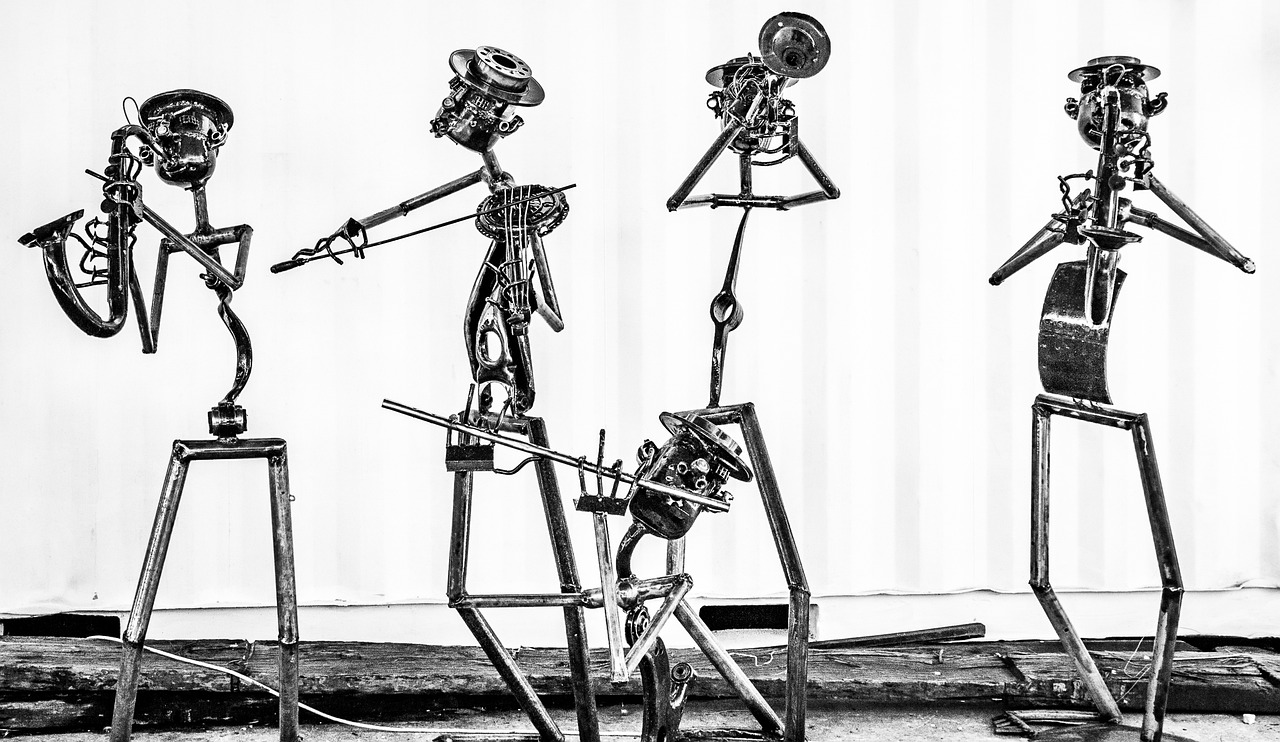
Environmental Impact
The concept of upcycling is not just a trendy craft; it carries significant environmental benefits that can transform our approach to waste management. When we upcycle, we breathe new life into items that would otherwise be discarded, drastically reducing the amount of waste that ends up in landfills. Did you know that landfills are among the largest sources of methane emissions, a potent greenhouse gas? By choosing to upcycle, you are directly contributing to the reduction of these harmful emissions and promoting a healthier planet.
Moreover, upcycling plays a pivotal role in conserving our precious natural resources. Every time we create something new from old materials, we diminish the need for raw materials, which often require extensive mining, cutting down forests, or other resource-intensive processes. Consider this: producing a single ton of paper can require over 24,000 gallons of water! By upcycling paper products, we not only save water but also reduce the energy consumption associated with manufacturing new paper. The ripple effect of these small changes can lead to substantial environmental improvements.
In addition, upcycling encourages a circular economy, where products are reused and repurposed rather than disposed of. This shift in mindset is crucial for creating sustainable communities. When we engage in upcycling, we are not just reducing waste; we are also inspiring others to rethink their consumption habits. The act of transforming an old wooden pallet into a beautiful garden bench or turning glass jars into stylish storage solutions not only showcases creativity but also ignites conversations about sustainability.
To further illustrate the environmental impact of upcycling, consider the following table that compares the benefits of upcycling versus traditional recycling:
| Aspect | Upcycling | Recycling |
|---|---|---|
| Waste Reduction | Significantly reduces landfill waste by repurposing items | Reduces waste but still requires processing and transport |
| Resource Conservation | Directly reuses materials, minimizing resource extraction | Recycles materials but often requires new resources for processing |
| Energy Consumption | Low energy use as it often requires minimal processing | Higher energy use due to collection and processing of recyclables |
| Creativity | Encourages personal creativity and innovation | Limited creativity; focuses on standard recycling processes |
In summary, the environmental impact of upcycling is profound and multifaceted. By reducing waste, conserving resources, and fostering a culture of creativity, upcycling not only benefits the planet but also enriches our lives. So, the next time you consider throwing something away, pause for a moment and ask yourself, "Can I upcycle this?" You might be surprised by the possibilities!
Q: What is the difference between recycling and upcycling?
A: Recycling involves processing materials to create new products, while upcycling transforms unwanted items into something of higher value without the need for extensive processing.
Q: Can anyone start upcycling?
A: Absolutely! Upcycling is for everyone, regardless of skill level. All you need is a bit of creativity and the willingness to experiment.
Q: What materials are best for upcycling?
A: Almost anything can be upcycled! Common materials include glass jars, old furniture, fabric scraps, and wooden pallets. The key is to think creatively about how to repurpose them.
Q: Where can I find upcycling inspiration?
A: There are countless resources online, including blogs, social media platforms, and DIY websites. Local workshops and community groups can also provide inspiration and support!
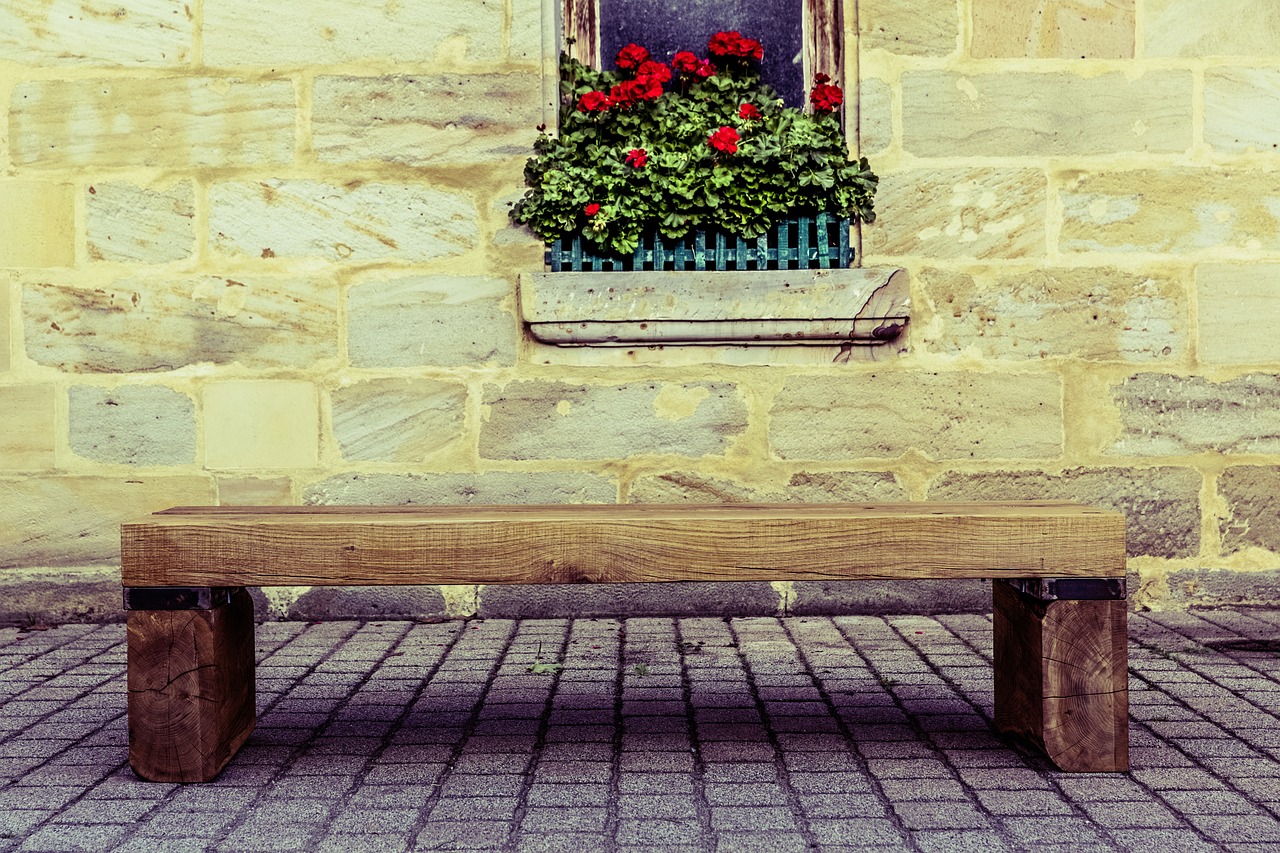
Reducing Carbon Footprint
When we think about our carbon footprint, it often feels overwhelming. It's like trying to measure how many footprints we leave on a sandy beach—each step counts, but collectively, they can create a massive impact. By embracing the art of upcycling, we can take significant strides toward reducing our carbon footprint. This isn't just about being eco-friendly; it's about making conscious choices that ripple through our daily lives.
Every time we upcycle an item, we are effectively reducing the demand for new products. Imagine this: when you transform an old wooden pallet into a beautiful garden bench, you're not just creating something new; you're also preventing the need for new wood to be harvested and processed. This process of reusing materials means that less energy is consumed in production, which directly correlates to lower carbon emissions.
Furthermore, consider the entire lifecycle of a product. From extraction to manufacturing, transportation, and eventual disposal, each phase contributes to carbon emissions. By upcycling, we can significantly cut down on these stages. For example, if you choose to turn glass jars into stylish storage containers instead of buying new ones, you're saving the energy that would have gone into creating those new jars. It’s like giving a second chance to these materials, allowing them to serve a purpose again without the environmental cost of new production.
It's important to acknowledge that even small actions can lead to substantial changes. Here are a few ways upcycling can help reduce your carbon footprint:
- Less Waste: By upcycling, we divert items from landfills, which are significant sources of methane—a potent greenhouse gas.
- Resource Efficiency: Upcycling encourages the use of existing materials, reducing the need for new resources.
- Mindful Consumption: Engaging in upcycling fosters a mindset of sustainability, leading to better purchasing decisions in the future.
In essence, every upcycled project is a step towards a more sustainable lifestyle. It’s about being resourceful and creative, while also being aware of the environmental implications of our choices. So, the next time you consider tossing out an item, think about how you might breathe new life into it. Remember, every little bit helps, and together, we can make a difference in reducing our carbon footprints.
- What is upcycling? Upcycling is the process of transforming waste materials or unwanted products into new materials or products of better quality or environmental value.
- How does upcycling reduce my carbon footprint? By reusing materials, upcycling minimizes the need for new production, which reduces energy consumption and greenhouse gas emissions.
- Can anyone start upcycling? Absolutely! Upcycling is for everyone, regardless of skill level. All it takes is a bit of creativity and willingness to experiment.
- Where can I find materials for upcycling projects? You can source materials from home, thrift stores, garage sales, or even community exchanges.
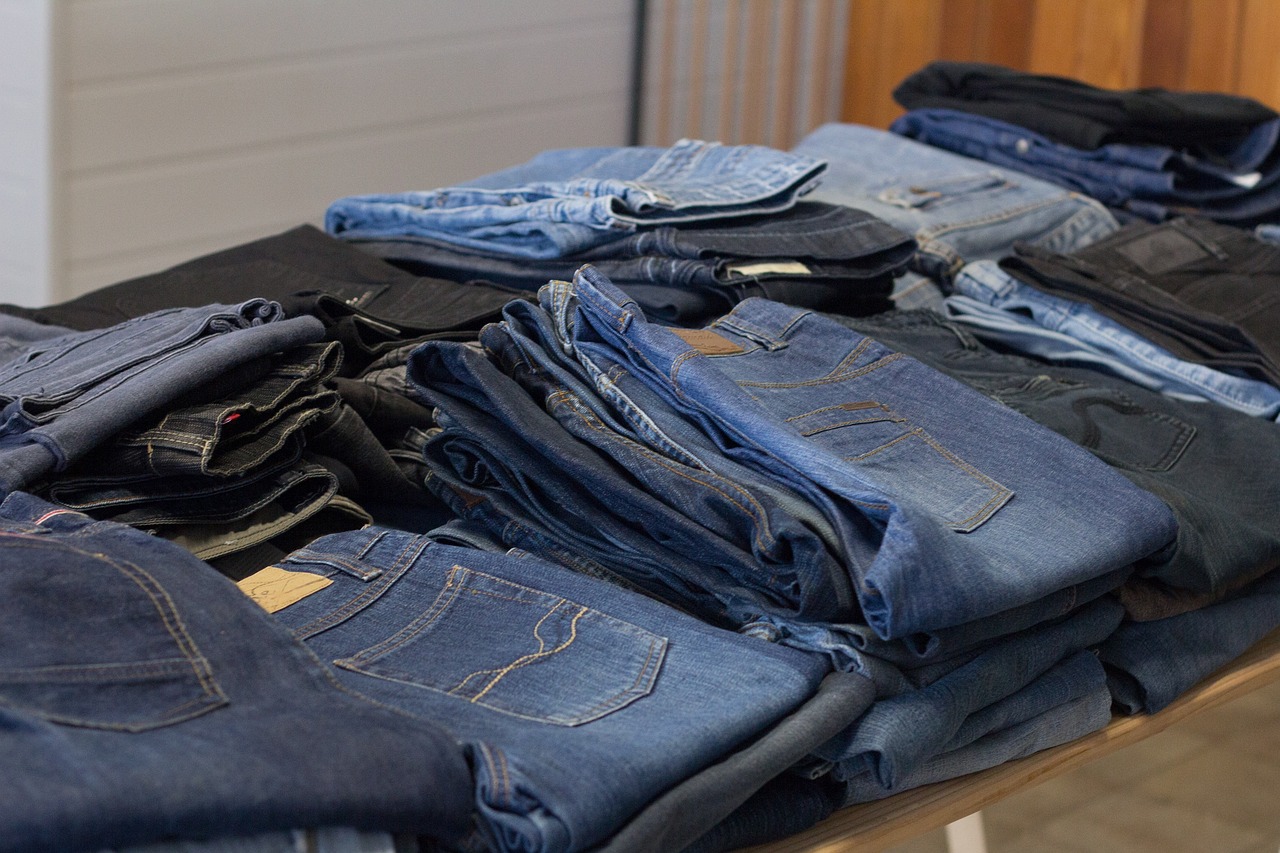
Conserving Resources
When we talk about upcycling, one of the most significant benefits that often gets overlooked is its role in . In a world where natural resources are dwindling at an alarming rate, every small action counts. Upcycling allows us to take materials that would otherwise be discarded and transform them into something new and useful. This not only reduces the demand for new raw materials but also minimizes the energy consumption associated with manufacturing new products.
Think about it: every time you upcycle an item, you're effectively giving it a second life. This process involves reusing materials that are already in existence, which can drastically cut down on the need for extraction, production, and transportation of new resources. For instance, consider a simple glass jar. Instead of tossing it in the recycling bin, you can turn it into a stylish storage container or a beautiful lantern. By doing so, you're saving energy and resources that would have been used to create a new product.
Moreover, the impact of upcycling extends beyond just individual projects. When communities embrace upcycling, the collective effect can lead to significant resource conservation. Imagine neighborhoods where people regularly exchange items they no longer need. Not only does this reduce waste, but it also fosters a sense of community and shared responsibility towards the environment. Here are a few key points to consider:
- Reduced Demand for New Products: Each upcycled item reduces the need for new products, which often require raw materials and energy to produce.
- Less Waste: By repurposing items, we keep them out of landfills, which helps in conserving land and reducing pollution.
- Encourages Sustainable Practices: Upcycling promotes a culture of sustainability, encouraging individuals and communities to think creatively about their consumption habits.
In essence, conserving resources through upcycling is a powerful way to combat the environmental challenges we face today. It’s a reminder that we have the ability to make a difference, one project at a time. So, the next time you consider throwing something away, ask yourself: how can I give this a new purpose? By shifting our mindset towards resourcefulness, we can contribute to a more sustainable future.
- What materials can I upcycle? Almost anything! Common items include glass jars, old furniture, clothing, and cardboard boxes.
- Do I need special skills to upcycle? Not at all! Many upcycling projects are simple and can be done with basic tools and creativity.
- Where can I find inspiration for upcycling projects? Websites like Pinterest, DIY blogs, and community workshops are great places to start.
- Can upcycling really make a difference? Yes! Every upcycled item contributes to reducing waste and conserving resources, making a positive impact on the environment.

Creative Upcycling Ideas
When it comes to upcycling, the possibilities are truly endless! It’s like stepping into a treasure trove of creativity where everyday items can be transformed into something extraordinary. Imagine turning an old ladder into a stylish bookshelf or repurposing glass jars into beautiful candle holders. Not only does upcycling breathe new life into items that might otherwise end up in a landfill, but it also allows you to showcase your personal style and creativity. Here are some innovative ideas to get your wheels turning:
One fantastic project is to transform worn-out t-shirts into reusable shopping bags. This is not just a fun craft; it’s a practical solution to reduce plastic waste. Simply cut and tie the bottom of the shirt, and voilà! You have a unique bag that tells a story. Want to take it a step further? You can decorate the bag with fabric paint or patches to give it that personal touch.
Another creative endeavor is using wine corks to make coasters or bulletin boards. If you have a collection of corks lying around, why not gather them and create something functional? For coasters, simply glue them together in a circular or square shape, and for a bulletin board, attach them to a frame. Not only do these projects reduce waste, but they also add a rustic charm to your home décor.
For those who love gardening, consider upcycling old pallets into vertical gardens. This is a brilliant way to utilize vertical space and create a stunning display of plants. Just sand down the pallet, paint it if you like, and fill the slats with soil and your favorite herbs or flowers. It’s an eye-catching addition to any outdoor space and a great conversation starter!
If you’re feeling particularly crafty, why not turn old jeans into stylish tote bags? The denim fabric is durable and perfect for carrying groceries or books. Simply cut the legs off, sew the bottom shut, and add handles made from the remaining fabric. This project not only gives a second life to your jeans but also showcases your sewing skills.
Lastly, let’s not forget about the beauty of transforming glass jars into decorative storage. Whether it’s for your kitchen, bathroom, or craft room, these jars can serve multiple purposes. You can paint them, wrap them in twine, or even use them as candle holders. The options are truly limitless!
In summary, upcycling is not just a trend; it’s a lifestyle choice that encourages sustainability and creativity. By thinking outside the box and seeing the potential in everyday items, you can create beautiful and functional pieces that reflect your personality. So, gather your materials, unleash your creativity, and start your upcycling journey today!
- What is upcycling? Upcycling is the process of transforming old or discarded materials into new products of better quality or for better environmental value.
- How is upcycling different from recycling? While recycling involves breaking down materials to create new products, upcycling creatively repurposes items without altering their original form significantly.
- Can I upcycle anything? Almost! You can upcycle a wide range of items including furniture, clothing, and household goods. Just use your imagination!
- Do I need special skills to start upcycling? Not at all! Upcycling can be as simple or as complex as you want it to be. Start with easy projects and build your skills over time.
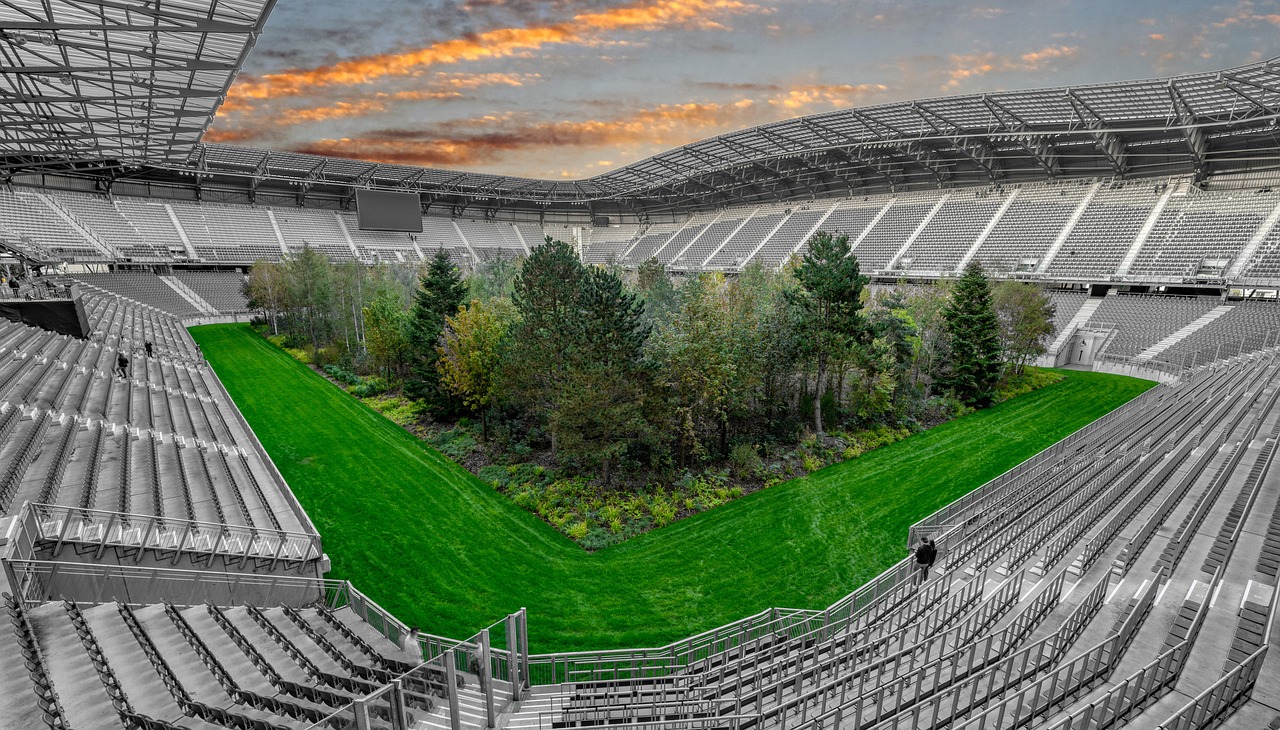
Getting Started with Upcycling
Are you ready to dive into the exciting world of upcycling? It’s more than just a trend; it’s a lifestyle choice that can transform your unwanted items into something spectacular! But where do you start? First things first, embrace your creativity. Upcycling is all about taking what you already have and seeing it through a new lens. Think of it as a treasure hunt in your own home. Look around—what do you see? Old furniture, jars, or even fabric scraps? Each of these items holds potential waiting to be unlocked.
Next, choose the right projects that resonate with your skills and interests. Not every project needs to be a grand undertaking; sometimes, the simplest ideas can yield the most beautiful results. For instance, consider transforming an old wooden crate into a stylish bookshelf or turning glass bottles into chic candle holders. The key is to select projects that excite you—this will keep your motivation high and your creativity flowing. Remember, it’s not just about the end product; it’s about the journey of creation!
Now that you have your projects in mind, it’s time to gather your materials. You might be surprised at how many items you can repurpose from your own home. Check your closets, garage, or even your kitchen. Here are some places to look for materials:
- Old clothes that can be turned into tote bags or quilts
- Furniture pieces that need a little love and a fresh coat of paint
- Glass jars that can be transformed into storage solutions or decorative vases
- Wood scraps that can be used for small projects like birdhouses or planters
If you can’t find enough materials at home, don’t worry! Thrift stores and community exchanges are fantastic places to source items for your upcycling projects. Many people donate perfectly good items that just need a bit of imagination to shine again. Plus, you might even discover unique pieces that inspire you!
Finally, develop the right mindset for your upcycling journey. It’s essential to approach your projects with an open mind and a willingness to experiment. Mistakes are part of the process, so don’t be afraid to try something new. The beauty of upcycling is that it’s all about creativity and innovation. You might just stumble upon a technique or style that becomes your signature! So, roll up your sleeves, put on some music, and let your imagination run wild. Upcycling is not just a way to reduce waste; it’s a chance to express yourself and make something truly unique.
Q1: What materials can I upcycle?
A1: Almost anything! Common materials include glass jars, old furniture, fabric scraps, and even cardboard. The possibilities are endless!
Q2: Do I need special tools for upcycling?
A2: While some projects may require basic tools like scissors, glue, or paint, many upcycling projects can be done with what you already have at home.
Q3: Can upcycling save me money?
A3: Absolutely! Upcycling allows you to create new items from what you already own, which can save you money on purchasing new products.
Q4: How do I get inspired for upcycling projects?
A4: Inspiration can come from anywhere! Check out social media platforms like Pinterest or Instagram, visit local craft fairs, or simply look around your home for ideas.

Choosing the Right Projects
When diving into the world of upcycling, the first step is to choose the right projects that resonate with your skills, interests, and available materials. This process can be both exciting and a bit overwhelming, especially when you consider the endless possibilities out there. So, how do you narrow it down? Start by reflecting on your personal style and the types of items you enjoy working with. Are you a fan of rustic decor, or do you prefer a more modern aesthetic? Understanding your preferences will help you select projects that you’ll actually want to pursue.
Next, consider the materials you have on hand. Look around your home—what items do you have that could use a little TLC? Common household items like glass jars, old furniture, or even worn-out clothing can be transformed into something spectacular. For example, an old ladder can become a unique bookshelf, while glass bottles can be turned into charming vases. The key is to view these items through a creative lens and imagine their potential.
Another important aspect is your skill level. If you’re just starting out, it’s wise to choose projects that are manageable and enjoyable. Don’t bite off more than you can chew! Here are some project ideas based on different skill levels:
| Skill Level | Project Ideas |
|---|---|
| Beginner | Decorative jars, fabric coasters, or painted flower pots. |
| Intermediate | Upcycled furniture, wall art from old frames, or t-shirt tote bags. |
| Advanced | Custom-built furniture, intricate jewelry from scrap materials, or large-scale art installations. |
Don’t forget to tap into your community! Engaging with local upcycling groups or online forums can provide inspiration and support. You might discover new techniques, resources, or even collaborative projects that spark your creativity. Plus, sharing ideas with others can lead to unexpected and delightful outcomes.
Finally, remember that upcycling is not just about creating something new; it’s also about the journey. Embrace the learning process and allow yourself to experiment. If a project doesn’t turn out as planned, view it as a stepping stone rather than a failure. Each attempt teaches you something valuable and brings you closer to mastering the art of upcycling.
So, as you embark on your upcycling adventure, keep these tips in mind: align projects with your interests, utilize materials you already have, assess your skill level, and don’t shy away from community engagement. With the right mindset and a bit of creativity, you’ll find that upcycling can be a rewarding and fulfilling experience.
Q1: What is upcycling?
A1: Upcycling is the process of transforming unwanted or discarded items into new products of better quality or environmental value.
Q2: How can I find materials for upcycling?
A2: You can find materials at home, thrift stores, garage sales, or through community exchanges.
Q3: Can upcycling save me money?
A3: Yes! Upcycling often uses materials you already have, which can significantly reduce the cost of home decor or personal items.
Q4: Is there a skill level required for upcycling?
A4: Not at all! Upcycling can be tailored to any skill level, from beginner to advanced, making it accessible for everyone.

Gathering Materials
When it comes to upcycling, the first step is all about . You might be surprised by how many items you already have lying around your home that can be transformed into something new and beautiful. Think of your home as a treasure trove, filled with potential waiting to be unleashed! From old furniture to discarded clothing, there are countless opportunities to breathe new life into what might otherwise end up in a landfill.
Start by taking a good look around your living space. Open those drawers, peek into the garage, and check out your closet. You may find items that you no longer use or need, such as:
- Old glass jars
- Wooden pallets
- Outdated furniture
- Worn-out clothes
- Broken electronics
Once you have identified potential materials, consider where else you might source items. Thrift stores can be a goldmine for upcyclers, offering inexpensive materials that can be transformed into something special. Plus, you’re supporting a good cause by shopping second-hand! Don't forget about community exchanges or local buy-and-sell groups on social media platforms. These places often have people looking to give away items for free or at a low cost, just waiting for someone like you to come along and create something amazing.
Another great way to gather materials is to host a swap party with friends or neighbors. Invite them over and encourage everyone to bring items they no longer want. This way, you can all exchange materials and ideas, fostering a sense of community while reducing waste. It’s a win-win situation! Think of it as a potluck, but instead of food, you’re sharing potential projects.
As you begin to collect materials, keep an eye out for items that can serve multiple purposes. For example, an old ladder can be transformed into a unique bookshelf, while wine corks can become coasters or decorative art pieces. The key is to let your imagination run wild and think outside the box. Remember, upcycling is not just about making something functional; it’s also about expressing your creativity and personal style.
Lastly, don't forget to keep your workspace organized. As you gather materials, designate a space where you can sort and store them. This will help you keep track of what you have and inspire new ideas as you see the potential in your collected items. Just like a chef needs a well-stocked kitchen to whip up a delicious meal, you’ll need a tidy, inspiring workspace to craft your upcycled masterpieces!
Q: What types of materials are best for upcycling?
A: Almost anything can be upcycled! Look for items that are sturdy and have potential for transformation. Common materials include wood, fabric, glass, and metal.
Q: Can I upcycle items that are broken?
A: Absolutely! In many cases, broken items can be creatively repaired or repurposed into something entirely new. Don’t throw them away without considering their potential!
Q: How do I know if an upcycling project is right for me?
A: Choose projects that match your skill level and interests. Start small and gradually tackle more complex projects as you gain confidence and experience.
Q: Where can I find inspiration for upcycling projects?
A: The internet is a treasure trove of inspiration! Websites like Pinterest, Instagram, and DIY blogs are fantastic resources for finding creative ideas and tutorials.

Sharing Your Upcycled Creations
Sharing your upcycled creations is not just about showcasing your hard work; it's about creating a ripple effect of inspiration and sustainability within your community. When you display your unique projects, you invite others to consider the potential of their own discarded items. Imagine walking into a room filled with vibrant, repurposed furniture, handmade decorations, and innovative solutions to everyday problems. It’s like stepping into a gallery of creativity where every piece tells a story of transformation. So, how can you effectively share your creations and spark a movement? Let’s dive into some exciting avenues!
One of the most accessible ways to share your upcycled projects is through social media platforms. With the power of hashtags like #Upcycling and #DIYProjects, you can connect with fellow enthusiasts and inspire others to think outside the box. Platforms like Instagram and Pinterest are particularly visual, making them perfect for showcasing before-and-after photos of your work. You can even start a blog or a YouTube channel dedicated to your upcycling journey, where you can share tutorials, tips, and the stories behind your projects.
Besides digital sharing, consider hosting a local workshop or a community event. This hands-on approach allows participants to engage directly with the upcycling process. Imagine gathering a group of friends or neighbors to transform old t-shirts into tote bags or wooden pallets into garden furniture. Not only does this create a fun atmosphere, but it also fosters a sense of community and collaboration. You can provide materials, guidance, and encouragement, making it a memorable experience for everyone involved.
Moreover, participating in local craft fairs or farmers' markets can be an excellent way to showcase your upcycled creations. Setting up a booth allows you to interact with potential buyers and share the stories behind each piece. You can explain the environmental benefits of upcycling, engage in conversations about sustainability, and even offer live demonstrations of your techniques. This not only promotes your work but also raises awareness about the importance of reducing waste.
Lastly, don't underestimate the power of online marketplaces. Websites like Etsy or Facebook Marketplace provide a platform to sell your upcycled items to a broader audience. When listing your products, make sure to highlight the sustainable aspects and the creativity involved in each piece. This not only attracts eco-conscious consumers but also emphasizes the value of your work. You can even consider donating a portion of your sales to environmental organizations, further enhancing your commitment to sustainability.
In conclusion, sharing your upcycled creations can be a fulfilling journey that encourages others to join the movement towards sustainability. Whether through social media, community events, or local markets, each effort contributes to a larger conversation about waste reduction and creativity. So, gather your materials, unleash your imagination, and start sharing your upcycled masterpieces with the world!
- What materials are best for upcycling? Almost anything can be upcycled! Common materials include glass jars, wooden pallets, old clothing, and furniture. The key is to see the potential in what others might consider waste.
- Do I need special skills to start upcycling? Not at all! Upcycling can be as simple or as complex as you want it to be. Start with easy projects that match your skill level and gradually take on more challenging ones as you gain confidence.
- How can I find inspiration for my upcycling projects? Inspiration can come from anywhere! Browse social media, visit local thrift shops, or join upcycling groups to see what others are creating. You can also look at nature or your surroundings for ideas.
Frequently Asked Questions
- What is upcycling and how is it different from recycling?
Upcycling is the process of transforming waste materials or unwanted products into new items of better quality or for better environmental value. Unlike recycling, which typically breaks down materials to create new products, upcycling repurposes items without altering their original form significantly. It's like giving your old furniture a stylish makeover instead of sending it to the landfill!
- What are some benefits of upcycling?
Upcycling offers numerous benefits, including cost savings, reduced environmental impact, and the opportunity to express your creativity. By reusing materials, you not only save money but also contribute to less waste in landfills. Plus, it’s a fantastic way to unleash your inner artist and create unique items that reflect your personal style!
- How does upcycling help reduce my carbon footprint?
Upcycling plays a significant role in reducing your carbon footprint by minimizing the demand for new products. When you upcycle, you extend the life of existing materials, which means less energy is used in manufacturing new items. It’s like taking a step back and saying, "I can make something beautiful out of what I already have!"
- Where can I find materials for my upcycling projects?
There are countless places to source materials for your upcycling endeavors! You can start right at home by looking for items you no longer use. Thrift stores, garage sales, and community exchanges are also treasure troves for potential upcycling materials. Keep your eyes peeled; you never know what you might find!
- Can I involve my kids in upcycling projects?
Absolutely! Upcycling is a fantastic family activity that can teach kids about sustainability while sparking their creativity. You can work together on simple projects like turning glass jars into decorative storage or transforming old t-shirts into tote bags. It’s a fun way to bond and instill eco-friendly values!
- How can I share my upcycled creations with others?
Sharing your upcycled creations can be incredibly rewarding! You can showcase your projects on social media platforms, start a blog, or even host a local upcycling workshop. By sharing your work, you not only inspire others but also create a community of like-minded individuals who appreciate creativity and sustainability!




